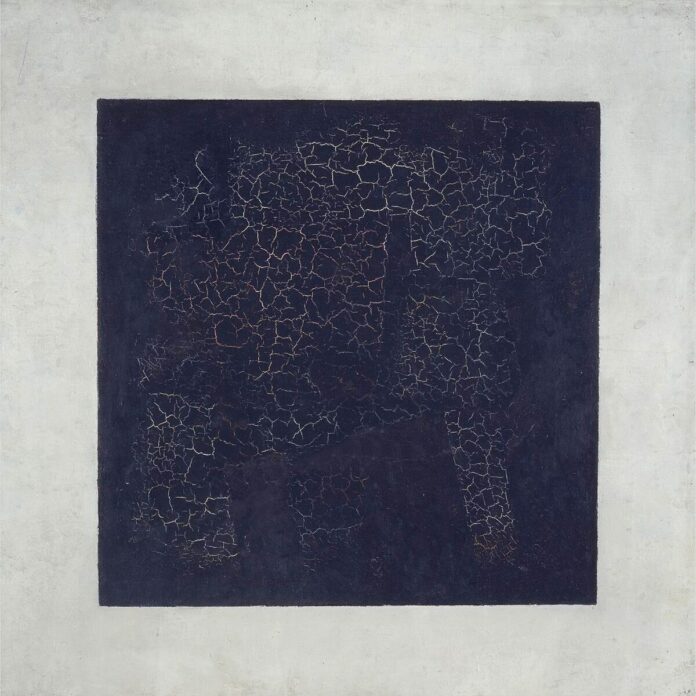The painting “Black Square,” created by the pioneer of the Russian avant-garde Kazimir Malevich in 1915, still evokes mixed feelings among art enthusiasts, ranging from admiration to incomprehension. But what do we actually know about this masterpiece? Here are some interesting facts about Malevich’s “Black Square”:
1. There are known to be four versions of the most scandalously famous painting of the 20th century, stored in the main museums of Russia (Tretyakov Gallery in Moscow; Hermitage and Russian Museum in St. Petersburg), differing from each other in color, texture, pattern, and size. However, only the first one (in black) is considered to be maximally energetically charged.
2. It turns out that two more colored compositions were discovered by experts from the Tretyakov Gallery under the first painting: cubo-futuristic and proto-suprematist. The reason why the artist painted three pictures on one canvas remains a mystery.
3. Experts estimate the value of Malevich’s “Black Square” today to exceed $100 million.
4. The black color on the painting is a mixture prepared by Malevich himself from three homemade paints: burnt bone, black ochre, paint with a dark green shade, and chalk. It’s conventionally black!
5. The history of the painting’s creation is also non-standard. The artist worked on the decorations for an experimental opera of his futurist friends titled “Victory over the Sun” (an allegory of a solar eclipse). Malevich covered combinations of different geometric figures with a black square with a light border. This was supposed to symbolize the eclipse of the sun with rays of light breaking through the darkness. His friends liked it.
6. For Malevich, the square is the main figure, already containing both a circle and a cross (a circle is the result of rotating a square on a plane, and a cross is a combination of several squares).
7. “Black Square” is created in the style of the artist’s invented new movement – suprematism, which Malevich himself considered to be the highest level of development of painting.
8. The laconic form of presenting information in the painting served as the basis for many ideas for other people, embodied in the fields of design, architecture, and fashion.
9. The original title of the painting in the catalog was “Quadrilateral” due to the absence of strictly straight angles (creating the illusion of the object’s mobility), equal sides, and parallelism of opposite lines.
10. “Black Square” is a representative of Malevich’s artistic-philosophical black-red-white triad, in which each participant has its own special role:
– the black square symbolizes economy;
– the red one represents revolution;
– the white one signifies pure action.
11. Malevich himself considered this canvas to be his best work.
12. At the artist’s funeral, his creation was present at the civil requiem in Moscow and Leningrad, on the white canvas covering his body, on the lid of the coffin, on the hood of the truck transporting the sarcophagus along Nevsky Prospekt, and on the train car to Moscow carrying the artist’s coffin.
Perhaps this list is not exhaustive, and Malevich’s “Black Square” holds many more surprises and mysteries within it.
